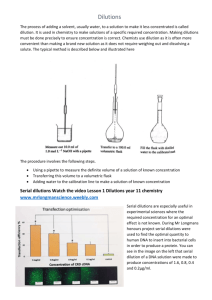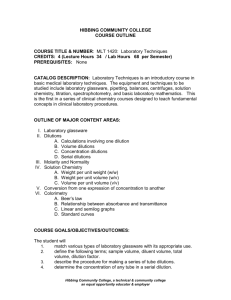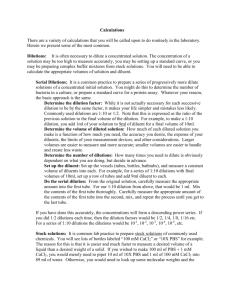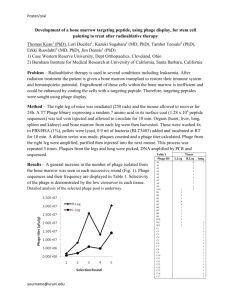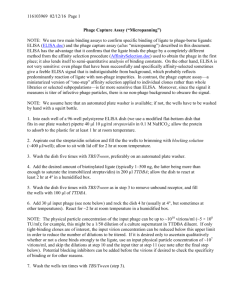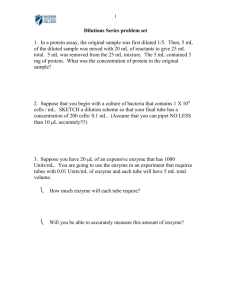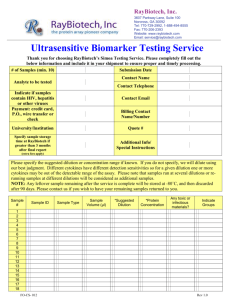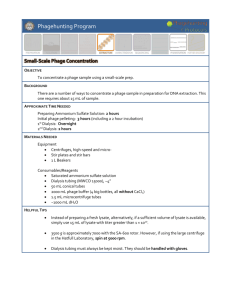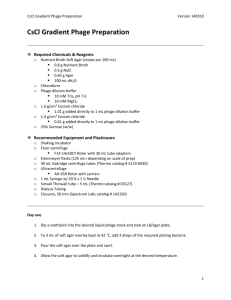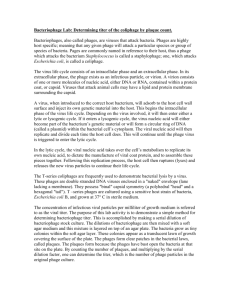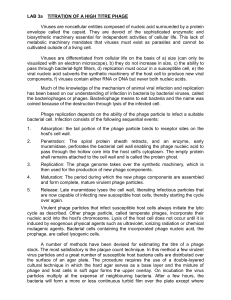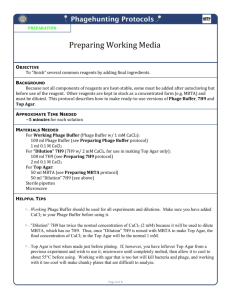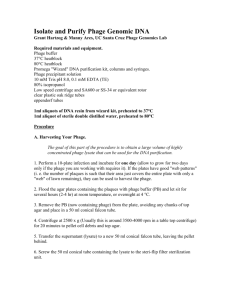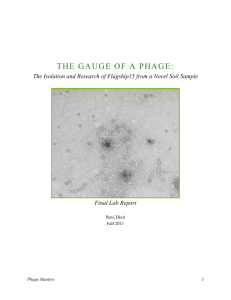Making Serial Dilutions
advertisement
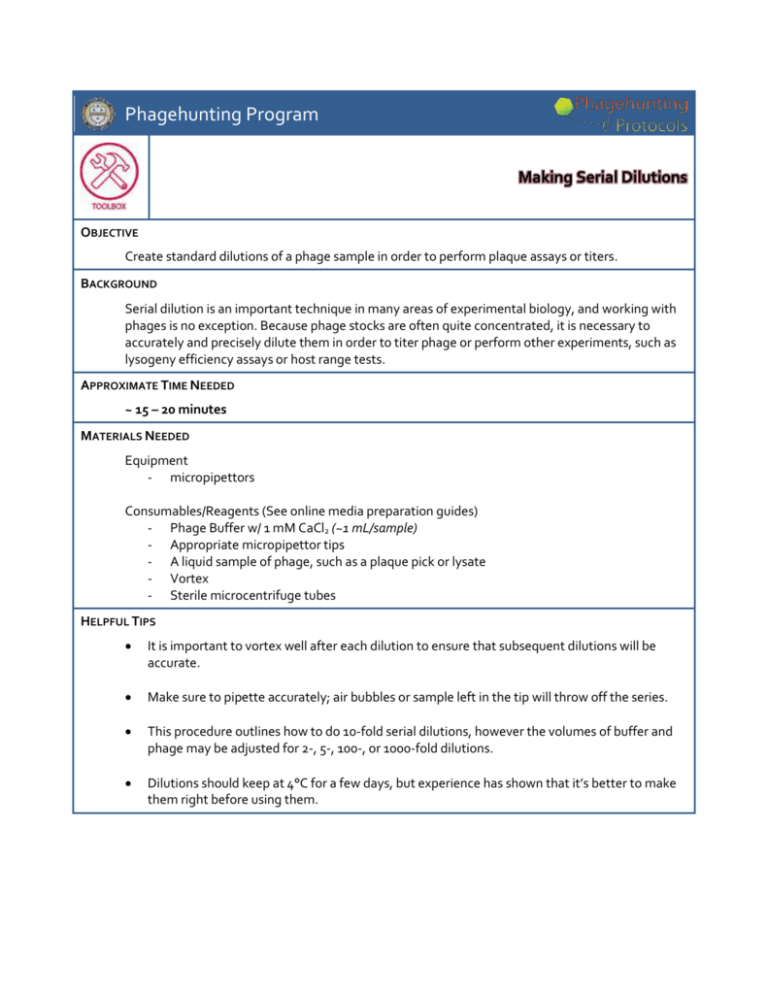
Phagehunting Program Making Serial Dilutions OBJECTIVE Create standard dilutions of a phage sample in order to perform plaque assays or titers. BACKGROUND Serial dilution is an important technique in many areas of experimental biology, and working with phages is no exception. Because phage stocks are often quite concentrated, it is necessary to accurately and precisely dilute them in order to titer phage or perform other experiments, such as lysogeny efficiency assays or host range tests. APPROXIMATE TIME NEEDED ~ 15 – 20 minutes MATERIALS NEEDED Equipment - micropipettors Consumables/Reagents (See online media preparation guides) - Phage Buffer w/ 1 mM CaCl2 (~1 mL/sample) - Appropriate micropipettor tips - A liquid sample of phage, such as a plaque pick or lysate - Vortex - Sterile microcentrifuge tubes HELPFUL TIPS It is important to vortex well after each dilution to ensure that subsequent dilutions will be accurate. Make sure to pipette accurately; air bubbles or sample left in the tip will throw off the series. This procedure outlines how to do 10-fold serial dilutions, however the volumes of buffer and phage may be adjusted for 2-, 5-, 100-, or 1000-fold dilutions. Dilutions should keep at 4°C for a few days, but experience has shown that it’s better to make them right before using them. PROCEDURES 1. Aseptically aliquot 90 μL Phage Buffer w/ 1mM CaCl2 into one microcentrifuge tube for each dilution that will be made. (For example, if making dilutions for a titer, prepare 10 tubes with 90 μL Phage Buffer w/ 1mM CaCl2.) 2. Label the tubes with the dilution number. 3. Remove 10 μL of the “neat” (undiluted) phage sample and add it to the first dilution tube (labeled 10–1). Vortex for five seconds to mix. 4. Remove 10 μL with a new pipette tip from the now‐mixed 10–1 tube and add to the 10–2 tube. Vortex to mix well. 5. Repeat this process until the required number of dilutions has been made. Figure 1: A schematic showing ten-fold serial dilutions from the neat lysate sample.

